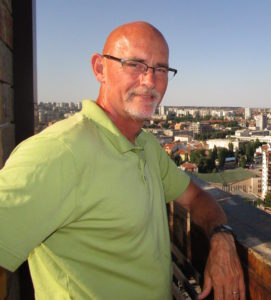News & Events
MSC03 2060
300 Terrace St. NE
Albuquerque, NM 87131-0001
Physical Location:
Clark Hall
Phone: 505-277-6655
chemistry@unm.edu
MSC03 2060
300 Terrace St. NE
Albuquerque, NM 87131-0001
Physical Location:
Clark Hall
Phone: 505-277-6655
chemistry@unm.edu

Profile: Professor Hartland received his B.Sc. in Chemistry from the University of Melbourne, Australia in 1985. He received his Ph.D. in Chemistry from the University of California, Los Angeles in 1991. He did his Postdoctoral Researcher at the University of Pennsylvania from 1991 until 1994. Dr. Harland became an Assistant Professor and then an Associate Professor at the University of Notre Dame in 1994 and 2000, respectively. He became a full Professor in 2004. From 2013 to 2015, he became the Associate Director Center for Sustainable Energy at the University of Notre Dame. He is currently the Principle Investigator for the Hartland Ground in the Department of Chemistry and Biochemistry and an Adjunct Faculty for the Notre Dame Radiation Laboratory at the University of Notre Dame. Research in the Hartland group is focused on using optics to examine the properties of nanomaterials and how these materials interact with their environments. Almost all the projects in the group involve single particle studies, and the development of novel techniques to perform time-resolved and steady state spectroscopy experiments on single particles is a major component of the research. Examples of the processes that are being studied are the propagation of surface plasmon polaritons in metal nanostructures, charge carrier trapping and diffusion in semiconductor nanowires, chemical reactions in nanomaterials, and the effects of viscosity at the nanoscale. Dr. Hartland is a Fellow of the Royal Society of Chemistry (2014), an American Chemical Society (ACS) Fellow (2011), and a Fellow of the American Association for the Advancement of Science (2009). Check out some of his of his publications "On the measurement of relaxation times of acoustic vibrations in metal nanowires" and "What’s so Hot about Electrons in Metal Nanoparticles?" !
Abstract: The optical properties of metal nanostructures are dominated by plasmon resonances, which are strong collective motions of the conduction electrons. These resonances are at the heart of a variety of schemes for molecular sensing and plasmon enhanced catalysis. However, the dynamics of plasmons can be difficult to study due to the distribution of particle sizes and shapes present in typical samples. In this talk I will describe single particle experiments that provide information about the ultrafast energy relaxation processes of plasmonic nanostructures, and how these structures interact with their environment. Examples of the processes that have been studied include the creation of novel hybrid states through coupling between plasmons and excitons, and the strange case of viscoelastic effects in the damping of vibrational modes of metal nanostructures. For more information check out the full text!

See Announcement